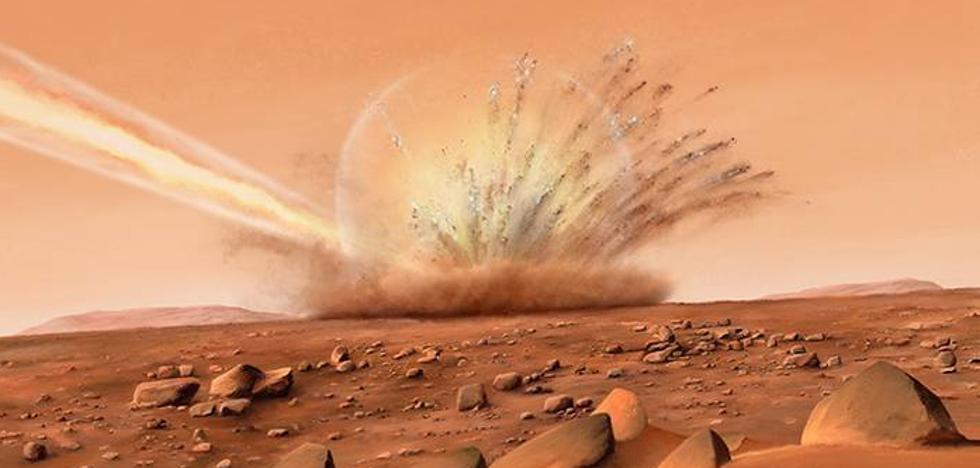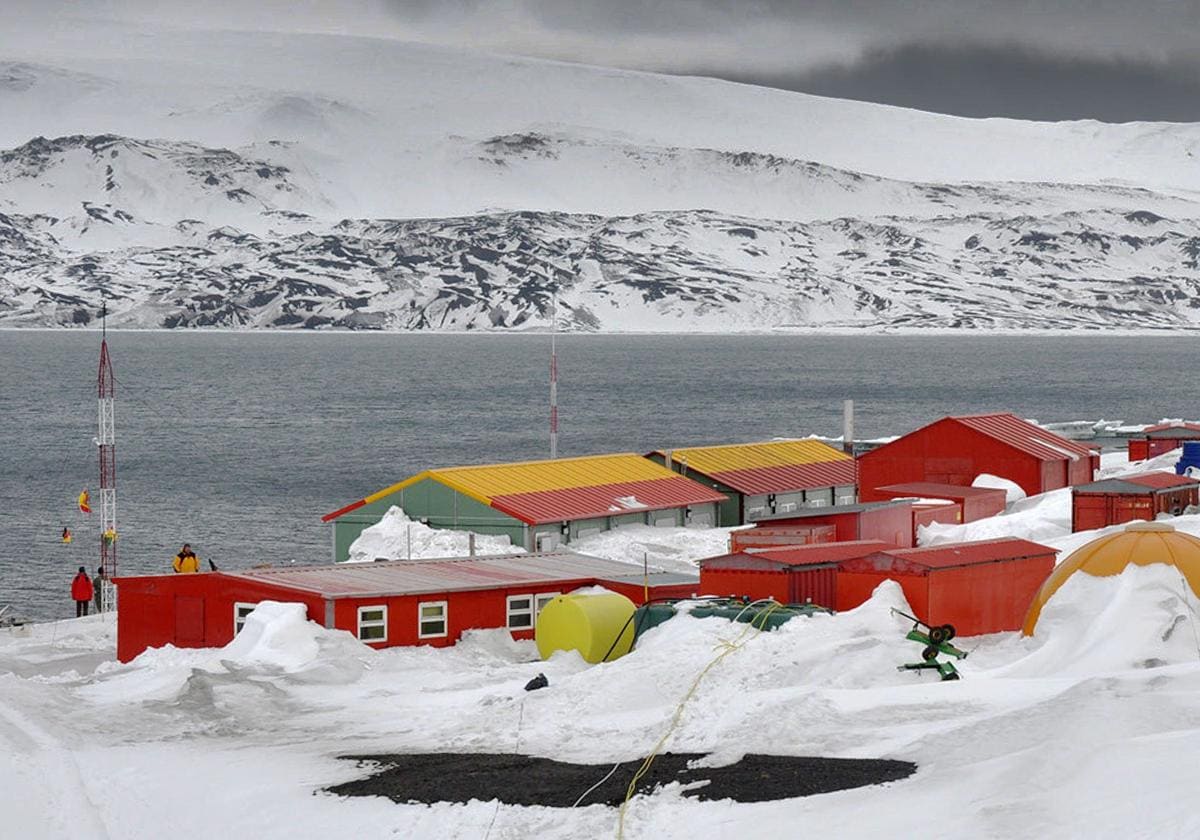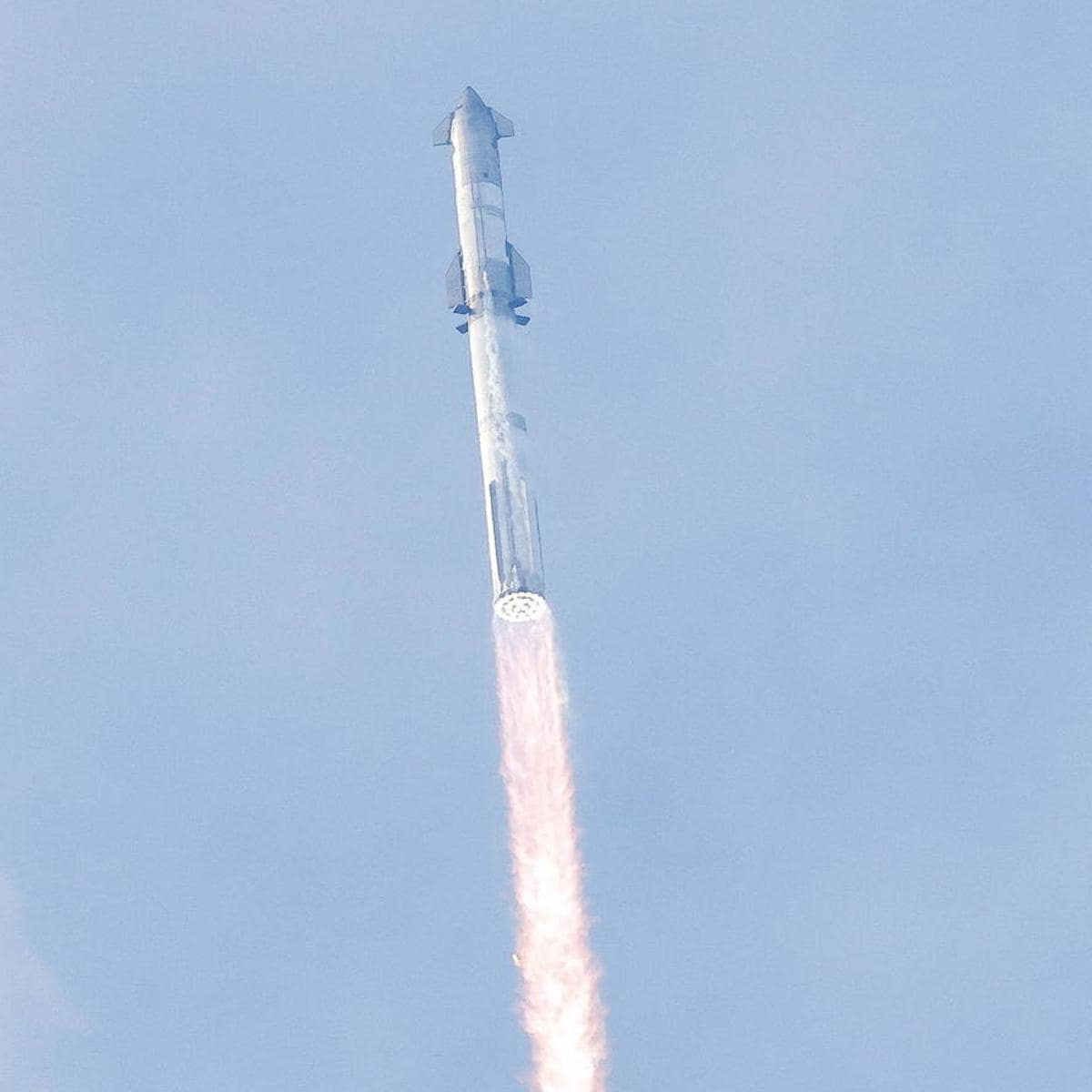The impacts of two meteorites allow geologists to take a look inside Mars

Artistic recreation of the meteorite impact of December 24, 2021 in Amazonis Planitia. /
Science | Space
NASA's Insight Laboratory has detected surface seismic waves on another world for the first time
The impacts of two large meteorites have allowed an international team of researchers to learn new details about the structure of the Martian crust thanks to the Insight laboratory, which has been in Elysium Planitia since November 26, 2018. The seismometer of the Mars robot NASA has detected more than 1,300 marsquakes since February 2019.
One of the strongest was recorded on December 24, 2021, when it captured internal and surface seismic waves. Examining photos taken by the Mars Reconnaissance Orbiter, in orbit around the planet since October 2006, the authors discovered a 150-meter impact crater that opened that same day in Amazonis Planitia. An analysis of data from the NASA laboratory confirmed that the earthquake had its focus at that point, 3,532 kilometers from Insight.
There are two types of seismic waves, internal and surface waves. For almost three years, the only ones Insight had detected were those generated from the center of each marsquake, deep within the planet. After identifying the December crater, the researchers discovered another similar one, also associated with an earthquake with surface waves detected by Insight, which had opened a meteorite on September 18 last year, 7,455 kilometers from where the NASA robot is.
Artist's impression of the Insight probe on Mars. /
“This is the first time surface seismic waves have been observed on a planet other than Earth. Not even the Apollo missions to the Moon succeeded," said Doyeon Kim, from the Zurich Institute of Geophysics and lead author of the study published in the journal Science. Surface seismic waves provide geologists with information about the structure of the Martian crust, which in turn gives clues about the planet's formation and evolution.
The Martian dichotomy
"Observations of surface waves have allowed us to broaden our knowledge of the structure of the crust beyond the landing site of the Insight probe," says Martin Schimmel, from the Barcelona Institute of Geosciences and co-author of the study. According to the CSIC researcher, with the new information they have verified that "the Martian crust seen at the lander site is probably not representative of the general structure of the planet's crust."
Researchers have found that seismic wave speeds and crustal density are higher farther away from Insight, pointing to a different composition. “This could be explained by volcanic resurgence processes. In fact, much of the surface wave path goes through volcanic provinces,” says Schimmel.
The authors believe that seismic wave analysis could help solve the mystery of the so-called Martian dichotomy, with a northern hemisphere dominated by plains and a mountainous southern hemisphere dotted with impact craters. “The cause of this dichotomy remains a matter of debate, with competing hypotheses such as exogenous processes related to giant impacts and endogenous models related to mantle convection. A more granular understanding of the structures of the deep crust and upper mantle would help discern competing hypotheses about the geodynamic evolution of Mars," geophysicists Yingjie Yang and Xiaofei Chen of the University of Science and Technology say in a commentary on the study. South Technology (China).












